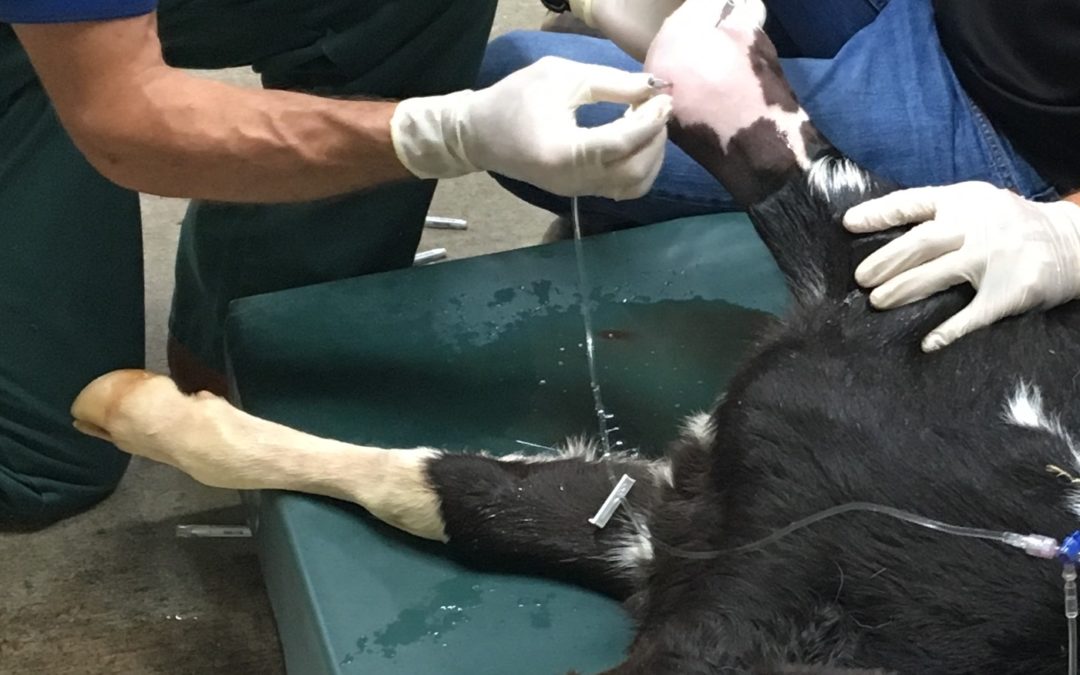Septic arthritis (commonly known as joint infections) are common in all breeds of cattle and can be life threatening to the animal. They are most commonly seen in young calves as secondary infections to umbilical (navel) infections shortly after birth. They may also be caused by direct trauma or wounds to the joint or the surrounding tissues. The most common joints that are affected are the carpus (front knee), stifle, or hock. While young calves can sometimes become lame and have a swollen joint secondary to trauma without infection, any lameness and joint swelling should be investigated as a possible joint infection, especially if there is evidence of an accompanying navel infection.
Clinical signs of septic arthritis include varying degrees of lameness in the affected limb, joint swelling, fever, and the feeling of warmth upon manipulation. When identified very early in the course of the infection, systemic antibiotics may be an effective treatment. However, once the infection has been established in the joint, it becomes very difficult to treat and often requires more aggressive therapy.
One treatment that has proven very effective is joint lavage. This involves sedating the calf and flushing a sterile solution into the joint through precisely placed needles. This procedure removes bacteria and toxins from the joint and allows antibiotics and the body’s own immune system to heal the joint.
In more advanced cases when joint lavage is ineffective, surgery may be required. This involves opening the joint and lavaging the area more aggressively. While this treatment carries a poorer prognosis, it can often obtain an acceptable result. Treatments of septic arthritis often require hospitalization for several days. If you suspect that your calf has an infected joint, contact us for an examination and evaluation of your animal.

